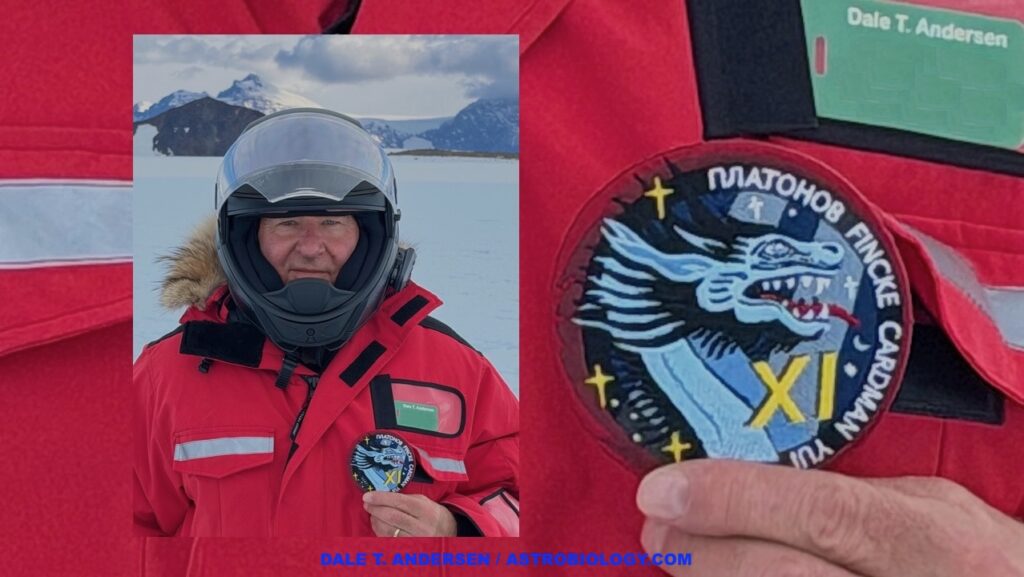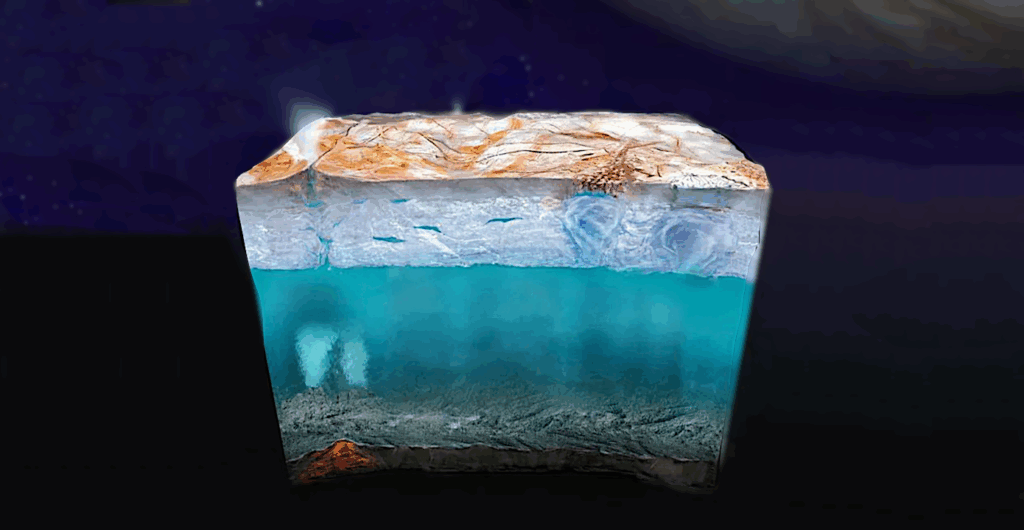Looking for Endolithic Organisms on Mt. Everest

One of the things Scott Parazynski will be looking or during his ascent of Mt. Everest is evidence of habitable zones for microorganisms. Given the low temperatures, air pressure, high radiation levels, and scarcity of liquid water, the loftier portions of this mountain can be considered “extreme environments”. Organisms that live in such extreme environments are often called “extremeophiles”.
Image: endolithic organism found within Antarctic rocks by NASA Astrobologists.
One of the things Scott will be looking or during his ascent of Mt. Everest is evidence of habitable zones for microorganisms. Given the low temperatures, air pressure, high radiation levels, and scarcity of liquid water, the loftier portions of this mountain can be considered “extreme environments”. Organisms that live in such extreme environments are often called “extremeophiles”.
One way that life has managed to survive within inhospitable environments is to seek out small chambers or micro-environments where the conditions are more favorable to life. One strategy is employed by “endoliths”. An endolith is an organism (archaeum, bacterium, fungus, lichen, alga or amoeba) that lives inside rock, coral, animal shells, or in the pores between mineral grains of a rock. Many are extremophiles and are found living in places previously thought inhospitable to life.
Endoliths are of particular interest to astrobiologists, among them Dr. Christopher McKay of NASA’s Ames Research Center. Many astrobiologists theorize that endolithic environments on Mars and other planets constitute potential “refugia” for extraterrestrial microbial communities. That is, life, which may have once been more abundant, was forced to retreat as conditions became less desirable. In so doing it may have found refuge in more hospitable locations similar to where Earth’s endoliths have been found.
NASA’s astobiology program has focused research upon the location and characterization of endoliths in a various extreme environments including the Atacama Desert, Antarctica, and other dry and cold locations around the world.

Image: Close-up of cryptoendolithic community found within the sandstone rock, Battleship Promontory, Antarctica. Courtesy Dale Andersen. Dale Andersen’s 1996 Antarctic Field Research Photo Album Volume 3
Despite the extreme locations in which these endoliths are found, they do require one thing at some point in their life cycle: liquid water – even if that liquid water exists for a very, very brief period of time. Locations on Earth where liquid water does not exist cannot support indigenous life.
Liquid water can exist in small microclimates caused by solar or geothermal heating. Other locations include small spaces on/within rocks. What is not known with any certainty is whether small microclimates where liquid water can exist at extreme altitudes such as on Mt. Everest. And if such microclimates do exist, does liquid water occur in locations where rocks capable of hosting endoliths exists such that endolithic organisms can be exposed to it?
While he climbs Mt. Everest, Scott will look for locations where liquid water may exist. It is probable that these will be south-facing locations where sunlight melts ice. Scott will register these locations using a GPS unit, photograph these locations, and take small rock samples when he thinks that he has located putative endolithic communities.

In addition, Scott will place small data loggers (iButtons – small sensors that are the size of a small coin but three times as thick) at select locations so as to characterize diurnal and seasonal temperature and moisture levels. Some Data loggers will be retrieved toward the end of May 2009. Others may be retrieved after longer term (over winter) exposure by other climbers.
Namaste
Keith
Astrobiology








